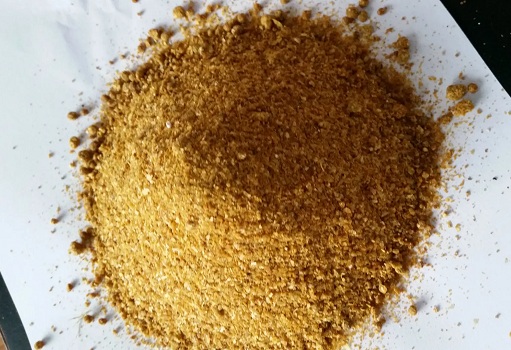SunSirs: China Domestic DDGS Weakened in 2023, What is the Market Situation in 2024?
January 24 2024 10:24:13 SunSirs (Selena)
According to the Commodity Market Analysis System of SunSirs, in 2023, the domestic DDGS market experienced a significant decline, with weak rebound and ups and downs, with an overall decline of over 31%. On January 1st, the average market price of domestic DDGS was 3,133 RMB/ton. On December 31st, the average market price of domestic DDGS was 2,150 RMB/ton, a decrease of 31.38%.
The domestic DDGS market in 2023 can be mainly divided into three stages. The first round of decline is from January to June, and the first round of rebound is from July to August; Second round of decline period: September to December.
The first round of decline period: In the first half of the year, the domestic DDGS market continued to oscillate and decline, with an overall decline of over 19%. After New Year's Day, the demand for terminal feed was weak, and alcohol factories had weak confidence in raising prices. Domestic DDGS began a continuous decline, coupled with the continuous decline in the raw material corn market, and the limited boosting effect of substitute soybean meal and rapeseed meal. Domestic DDGS continued to decline after a slight increase, with prices dropping from 3,133 RMB/ton to 2,526 RMB/ton, a decrease of over 600 RMB/ton.
The first round of rebound period: July August, starting from July, the demand for terminal aquaculture feed rebounded, the operating rate of domestic alcohol factories decreased, market supply tightened, and the domestic DDGS market continued to rise. The overall quotation of the alcohol factory has increased, rising until the end of August, and the market average price has risen to the first line of 3,000 RMB/ton, with a 21.7% increase in two months.
The second round of decline period: September December. Since September, domestic DDGS has returned to a downward trend, and the market has continued to decline. The off-season for terminal aquaculture consumption is approaching, and the demand for DDGS has weakened. Coupled with the decline in the raw material corn market, domestic alcohol factories have lowered the price of domestically produced DDGS. The market supply exceeds demand, and the DDGS market has been continuously declining, falling to the end of December, with an overall decline of over 30%.
According to the annual comparison of DDGS in 2023, it can be seen that domestic DDGS in 2023 is at a moderate level, with a certain gap from the highest price of 3,300 RMB/ton of domestic DDGS in 2022, and overall higher than in 2020 and 2021.
In 2023, the overall domestic DDGS market is weak and declining. Can we break free from the downturn and usher in an upward trend in 2024?
Supply side: Since 2018, the production of domestically produced DDGS has been continuously increasing. Except for 2021, which was less than 5 million tons, the production of domestically produced DDGS has maintained a growth trend in the past two years. In 2023, the production of domestically produced DDGS was close to 6 million tons. The pressure on the supply side is still present, and the production of domestically produced DDGS will remain high in 2024.
Imports: Starting from 2018, the import volume of domestic DDGS has gradually decreased. In 2021, due to the low production of domestic DDGS, the quantity of imported DDGS was relatively high, reaching 300,000 tons. In 2022, the import of DDGS will continue to decline, only around 90,000 tons. In 2023, the import of DDGS will still be around 100,000 tons, at a relatively low level. The domestic DDGS production continues to increase, and the imported DDGS quantity will still remain at a low level of 100,000 tons in 2024.
Policy: The Ministry of Commerce has announced that starting from January 12, 2023, anti-dumping and anti subsidy duties will continue to be imposed on imported dry corn distiller's grains originating from the United States, with an implementation period of 5 years.
Demand side: Domestic DDGS terminals mainly focus on aquaculture, and the demand for aquatic feed has a certain periodicity. Due to the impact of the Spring Festival and New Year holiday in the first quarter of 2024, terminal aquaculture is in the off-season. The second and third quarters are the peak season for aquaculture demand, with an increase in rigid demand. The fourth quarter is the traditional off-season for aquaculture, with poor demand.
Agricultural product analysts from SunSirs believe that in 2023, the overall performance of domestic DDGS market is poor, mainly due to loose supply and poor terminal demand. Entering 2024, the pressure on domestic DDGS supply remains, and production will continue to grow. Due to the impact of anti-dumping policies on imports, the quantity is limited, and there is a peak season of demand for terminal aquatic feed. In 2024, the domestic DDGS market will continue to experience ups and downs, with a decline in the first quarter, a peak in the second and third quarters, and a weak decline in the fourth quarter.
If you have any questions, please feel free to contact SunSirs with support@sunsirs.com.
- 2024-04-24 SunSirs: Negative News, China Domestic DDGS Market Weakens
- 2024-04-19 SunSirs: Negative Pressure, China Domestic DDGS Market is Weak and Falling
- 2024-04-07 SunSirs: China Domestic DDGS Market Rebounded, with an Increase of nearly 2% in the First Quarter of 2024
- 2024-03-27 SunSirs: China Domestic DDGS Market Rebounds in March
- 2024-03-21 SunSirs: Supported by Positive Factors, China Domestic DDGS Market Continues to Rise



